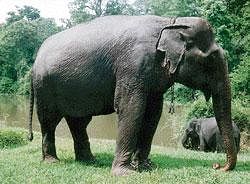
Akin to politics, most of the elephants used in the Dasara procession are well above 50 years, considered an ideal age for retirement, according to veterinarians. The forest department, however, does not seem to be serious about preparing the second line of elephants to take over the mantle. Instead, what they have been doing is getting elephants to attend Dasara festival, for the last 10 years, devoid of any change and much thought.
Interestingly, a majority of female elephants that are brought to attend the Dasara festival, are those that were caught in khedda operations at Kakanakote forests in 1960s and 70s. Kakanakote was famous for khedda operations after the first successful operation in 1873-74. Since then as many as 36 elephant capture operations were conducted until they were banned. After that not many elephants have been captured in the forests.
For example, Kanthi, the most senior elephant among those participating in the Dasara procession, is 70 years old, followed by Kavitha (68) and Mary is 54 years. No replacement has been found for Balarama, the elephant has been carrying the golden howdah, for the past 13 years.
Arjuna can be considered to be an apt replacement for Balarama, provided he mends his behaviour. Arjuna is bestowed with good looks and has the physique to carry the golden howdah.
But the problem with the elephant is its behaviour, as it hates being photographed and touched. Thus, the forest department is not yet ready to consider it as Balarama’s successor.
Dubious distinction
An officer, on condition of anonymity, told Deccan Herald that senior officials in the forest department is not inclined towards developing the second line of leadership.
They have been using the same set of elephants during the Dasara procession for the past 10 years. People and tourists seem to be bored of seeing the same set of elephants at the festival.
Moreover, tuskers that are available in different elephant camps are roguish and have the dubious distinction of killing human beings or raiding fields and destroying crops. As nobody agrees to take the risk of training them, their use in the Dasara procession is ruled out.
The officer also opined that it was appropriate to train elephants in their 20s and 30s, as they would be fit to replace the ageing elephants. Involving elephants in Dasara procession for a couple of years continuously would help them understand the crowd behaviour.
The saddest part is that elephants are remembered only during Dasara and later forgotten. A large number of good female elephants in the age group of 10-15 years across the State should be picked up and trained.
After they are duly trained, they would be fit to be used in the Dasara festival for the next two to three decades. As Dasara is a permanent feature, if the need arises tuskers can be procured from other countries as was the practice during the reign of the Maharajas of Mysore, he observed.